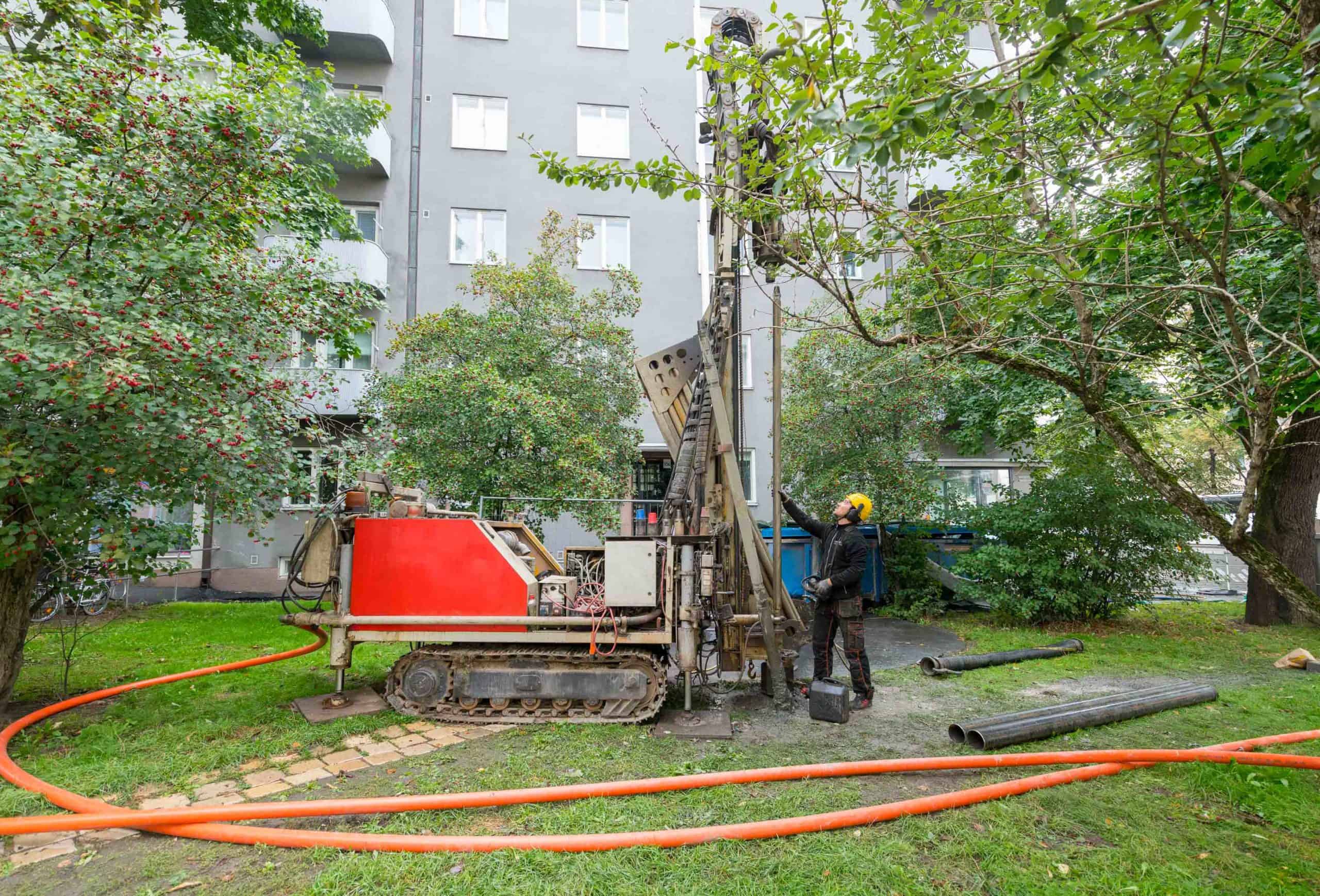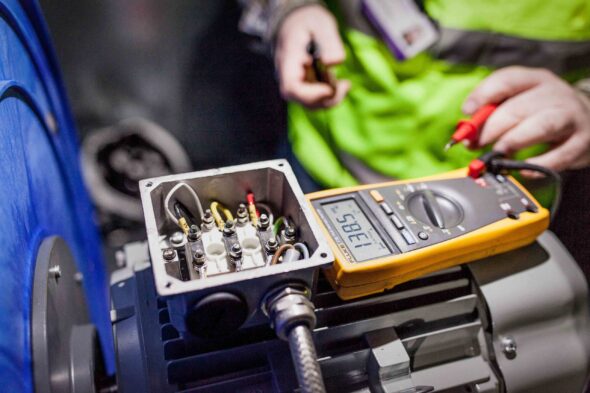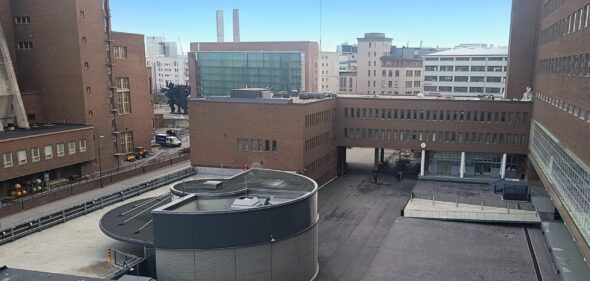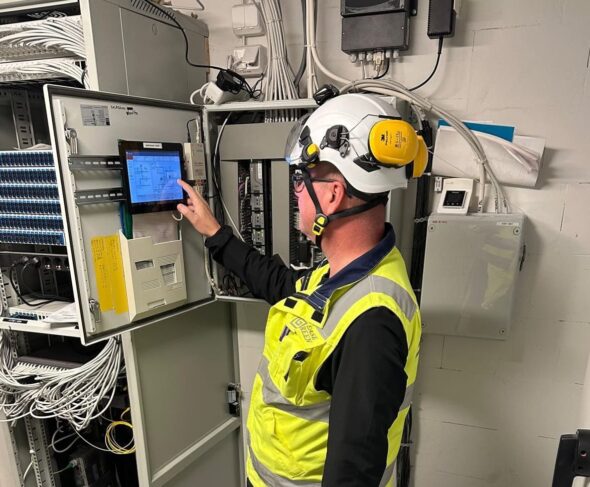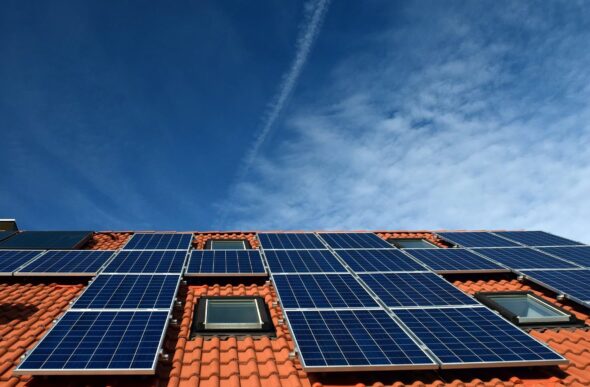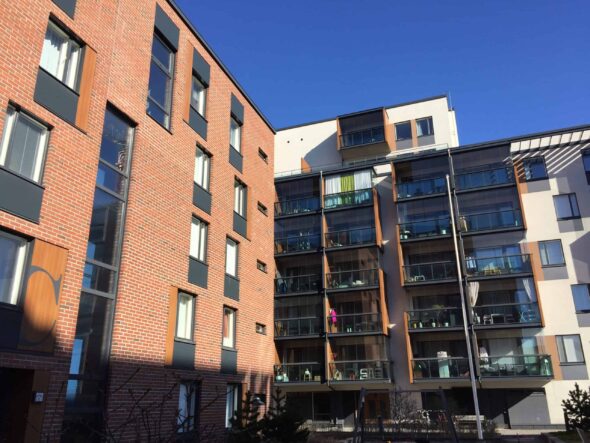The principle of geothermal heating is the same whether you heat an apartment building, a detached house or even a shopping centre. Of course, apartment blocks require more powerful geothermal heat pumps and more heat pipes than smaller properties.
The heat collection tubes collect solar energy stored in the rock, topsoil or water around them. A heat pump compressor compresses this heat energy from the ground or bedrock into a hotter form and transfers it to the water distribution network and domestic hot water.
The profitability of geothermal heating, or the so-called efficiency, is affected by the amount of hot water needed to heat a house. An old radiator network needs warmer water than, for example, underfloor heating.
Typical geothermal heat pumps are capable of producing 55-60°C water for the heating network. However, for older houses, this may not be enough in the harshest frosts.
For example, Mannerheimintie 106, built in the 1930s, has an old radiator network with a lower surface area and lower heat transfer capacity than modern radiators. In order to achieve the required heating response, the Mannerheimintie radiator network therefore needs to be fed with water at temperatures above 80 degrees Celsius in the coldest weather. A heat pump was therefore chosen, which uses a refrigerant and technology that allows the production of heating water with a temperature of up to 75 degrees Celsius.
In cities, the plots of land for apartment buildings are usually so small that the heat pipes are installed in so-called energy wells, or geothermal wells, drilled into the ground. As a rough rule of thumb, a Helsinki apartment block needs a well of just over one metre per square metre of living space. However, fewer wells are needed if the heat from the building’s exhaust air is utilised or if the same system can also be used for cooling.
The depth of the energy well is influenced not only by the need for heat energy, but also by the geographical location of the building, groundwater flows and the type of bedrock. Therefore, wells are sized on a case-by-case basis.
The further north you are, the deeper the hole you usually have to drill. The surface temperature of the bedrock in southern Finland is 6-7 degrees Celsius, in Lapland it is about five degrees less. The deeper you go, the warmer the ground. The temperature increases by about one degree per hundred metres. At a depth of four hundred metres, the temperature is already ten degrees Celsius.
Soil and rock type also play a role. For example, in areas of the southern coast that were formerly seabed, the thermal properties of the bedrock are poor. In such cases, a deeper energy well is needed. Similarly, in northern Finland, there are areas with good thermal conductivity, such as granite.
It’s important to size your energy well correctly – and preferably too big rather than too small. If left too small, the well will cool down too much and the efficiency of the heat pump will deteriorate over the years. If more energy is constantly drawn from the energy well than is transferred from the rock, the well may even freeze in the worst case.
Drilling technology for energy wells has improved in recent years, allowing deeper wells to be drilled.
Even a deep energy well is not enough to provide heat for an entire block of flats; several are needed. For example, a 6-storey block of flats on Mannerheimintie will require several deep energy wells of 330-400 metres. The total length of the wells is about two kilometres, enough to heat about 1,500 square metres and the domestic hot water needed in the building in a cost-effective way.
The siting of energy wells in urban environments is also a delicate task. The first step is to ensure that there is no contaminated soil, tunnels, tunnel reserves or groundwater beneath the area to be drilled, which could prevent the drilling of energy wells. Then you plan the best location for each well – and make sure they are far enough away from each other, other wells, drains, roads, heat pipes, property boundaries and buildings. Minimum recommended distances have been defined. However, it is also possible to drill energy wells closer together if they are drilled diagonally. In addition, a separate permit must be obtained from the city to drill the wells.
Many people wonder how large a plot of land is needed to build energy wells and geothermal systems. However, there is no clear answer to this question. The number of energy wells depends on the heat consumption of the building, the shape of the plot and the size of the geothermal system.
In Finland and other Nordic countries, energy wells are usually drilled into rock, and the well typically fills up with water on its own. Groundwater transfers the heat bound in the bedrock to the heat recovery fluid in the heat recovery pipe. Outside the Nordic countries, the bedrock is often deeper, which means that the energy wells may not reach the bedrock. Therefore, the space between the well and the collection pipes is filled with other substances instead of water.
